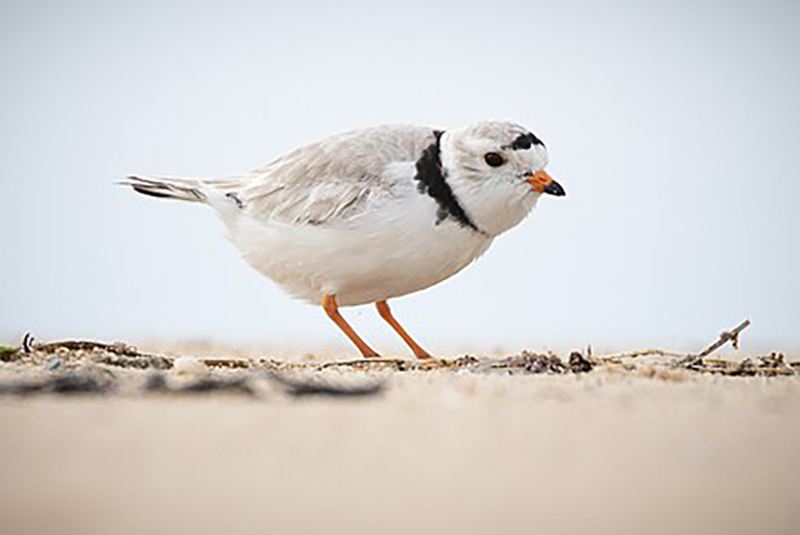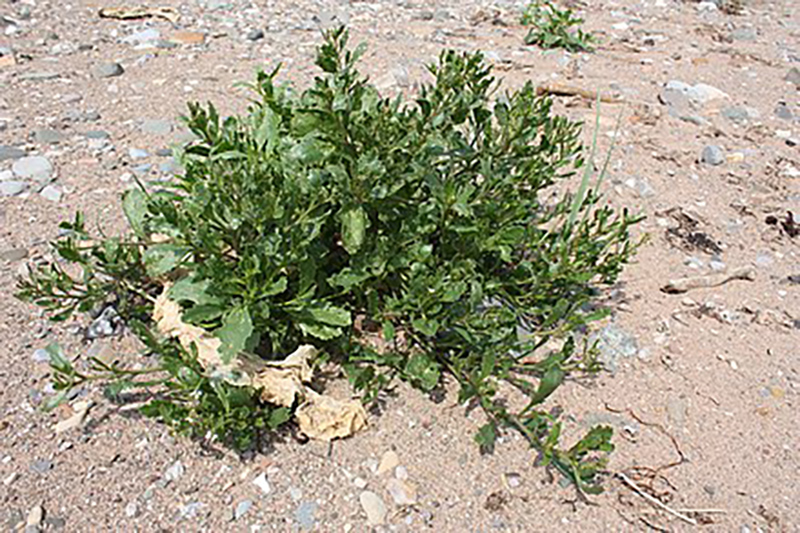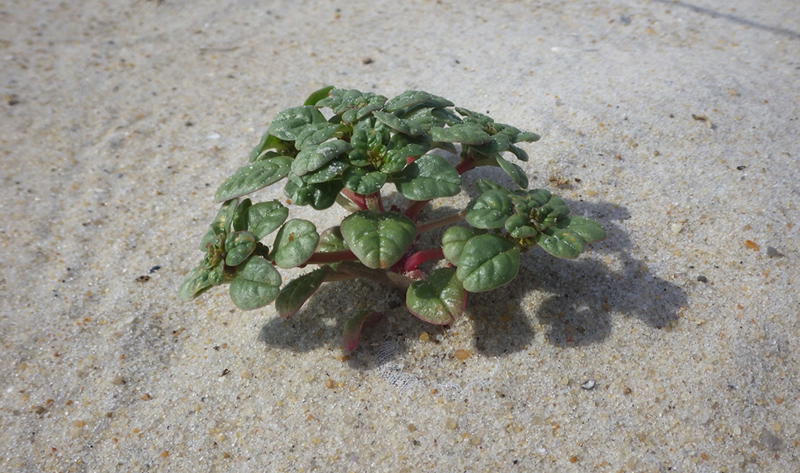Shoreline Habitat
The Dynamic Shoreline
Shorelines are dynamic and challenging environments where plants and animals must adapt to harsh conditions, including strong winds, shifting sands, lack of shade, and salt exposure. Despite these difficulties, these ecosystems support a gradient of habitats that host diverse collections of species, or communities, boosting the overall biodiversity and resilience of the ecosystem. Many species inhabiting these areas have developed special adaptations to deal with these difficult conditions.
Healthy, resilient shorelines benefit wildlife, offer more storm protection for human communities, and diverse recreation opportunities, making their preservation crucial for ecological and human well-being.
The Wrack Line
One of the most fascinating features of the shoreline is the wrack line, where debris like seaweed, eelgrass, and other organic materials accumulate along the high tide mark. Due to the constant movement, temperature fluctuations, and salinity, few animals and no rooted plants can live there. Nonetheless, this zone manages to be a hub of activity, providing shelter and food for insects, small crustaceans like sand hoppers (Americorchestia longicornis), worms, and shellfish, such as slipper snails (Crepidula fornicata). Scavengers like crabs break down organic matter, enriching the sandy soil. Exploring the wrack line can reveal skate egg cases, shells, seaweeds, and other treasures, offering a glimpse into the diversity of life on the shoreline.

High Beach and Young Dunes
As you move away from the water, conditions stabilize slightly, allowing life to establish in the high beach and young dune zones. These areas are characterized by constantly shifting sand, limited nutrients, and high salinity. Plants and animals here must adapt to extreme conditions, such as rapid drainage after rain and exposure to salt spray.
Hardy plants like American sea rocket (Cakile edentula) and the now extirpated (locally extinct) seabeach amaranth (Amaranthus pumilus) eke out an existence in these challenging environments thanks to their fleshy leaves that help dilute salt and a waxy, thick skin that helps retain moisture. These plants stabilize the sand and provide critical habitat for rare and threatened species, including the piping plover (Charadrius melodus). However, although these communities are hardy in many ways, they are highly susceptible to human disturbance. Foot traffic, off-road vehicles, and beach raking can crush plants, destroy nests, and reduce the survival of sensitive species. Predator management and restricting pet access are also crucial to protecting these fragile habitats.
Primary Dunes
Continuing inland from the high beach, primary dunes begin to form. These dunes are vital natural barriers that protect inland areas from storm surges and erosion. The sand here tends to consist of smaller grains, which hold water better than the coarse sand of the beach. This, combined with high humidity, creates conditions that support specialized plants like American beachgrass (Ammophila breviligulata).
American beachgrass plays a critical role in dune formation and stabilization. Its extensive root and rhizome network helps anchor sand, while its upright leaves trap windblown grains, building the dune over time. Adapted to thrive in harsh conditions, beachgrass can survive burial by sand, conserve water using specialized grooves in its leaves, and spread through vegetative propagation. Their extensive roots and rhizomes can extend up to 20 feet below the ground! Another adaptation is that their roots have been found to grow in association with mycorrhizal fungi, which help the plant absorb water and certain nutrients. However, American beachgrass is vulnerable to damage from trampling, which can disrupt its root systems and lead to widespread die-offs. Protecting dunes by staying on designated walkways is essential to maintain their integrity.
Moving further up the dune, the soil quality improves and there is some reprieve from the stress of salt spray and scouring sand, enabling other species like seaside goldenrod (Solidago sempervirens) and beach plum (Prunus maritima) to take root. Seaside goldenrod plants differ from their inland cousins by having fleshy leaves for water storage and a shiny, protective wax coating that reduces water loss from evaporation and salt exposure. These species add diversity to the dune ecosystem, supporting pollinators, birds, and small mammals. For example, seaside goldenrod provides nectar for monarch butterflies, while its seeds feed birds and rodents.
Recreation and the Role of Healthy Shorelines
Eco Park’s shoreline ecosystems not only withstand extreme environmental challenges but also provide invaluable services to people. These resilient habitats act as natural shields against flooding and erosion, safeguarding coastal communities. Additionally, they offer opportunities for recreation, such as birdwatching, kayaking, and fishing, enriching our connection to nature.
By learning about and supporting shoreline habitats, we can ensure these ecosystems continue to thrive, protecting both wildlife and the people who enjoy these beautiful coastal areas. A thoughtful, environmentally-minded approach to managing shorelines ensures that both their ecological health and the benefits they provide to humans are available for future generations.
Resources
Beaches & Dunes | Adapt CT – This resource outlines the structure and function of beach and dune ecosystems, focusing on their role as natural barriers to storms and their importance for biodiversity. It offers guidance on restoring and managing these habitats in the face of climate change.
Dune Manual – New Jersey Sea Grant Consortium – Although this guide is specific to New Jersey, it provides widely applicable information about dune ecology and practical advice for their management and restoration.
A Virtual Tour of Long Island Sound Habitat | NY/CT Sea Grant & Long Island Sound Study – This interactive resource takes users on a virtual exploration of Long Island Sound’s diverse habitats, including beaches and dunes.
Tour of Long Island Sound (Long Island Sound Study) – This webpage houses a photo tour of Connecticut Sea Grant’s Living Treasures guidebook. Browse the 8 chapters below:
- Living Treasures: The Plants and Animals of Long Island Sound (2021)

Piping Plover (Charadrius melodus)

American Sea Rocket (Cakile edentula)

Seabeach Amaranth (Amaranthus pumilus)
